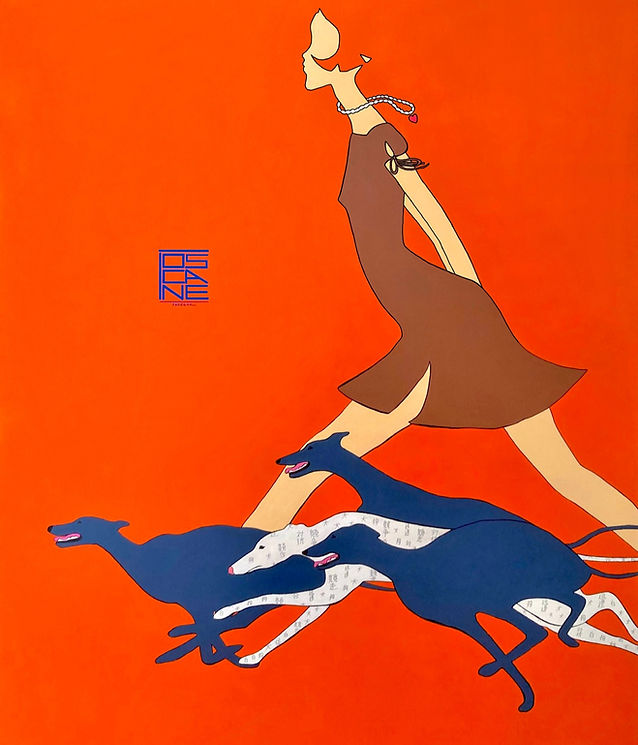

Through her central character named Mona, TOSCANE explores the fluid interaction between the individual and their environment, and how identity is shaped in this constant exchange. The name Mona comes from the fusion of two Japanese terms. On one hand, "皆" (mina), meaning "everyone, all," and on the other hand, "女" (onna), meaning "woman." Thus, Mona is the embodiment of all women: she is both the noble Mona Lisa and Zola's Nana.

The artistic technique of TOSCANE
TOSCANE is inseparable from her sketchbooks, which she constantly fills with drawings. Inspired by her travels and daily life, she explores numerous symbolic patterns, finding inspiration in every aspect of her life. Before starting a canvas, she creates a sketch, which she then transfers onto the canvas after preparing a deliberately smooth background where the texture fades to make way for a uniform layer of paint. Her work is distinguished by extreme attention to detail, a result of the techniques she learned from her art masters in Tokyo.
Symbolism and poetry of TOSCANE's work
Mona is depicted with hair that harmonizes with the background color of each canvas, becoming both a mirror and a metaphor for universal femininity. Through her, TOSCANE highlights the beauty of mutual transformation: the individual influences their surroundings while being transformed by them.
Another key symbol in her work is the white animal that accompanies Mona. A symbol of purity, innocence, and spirituality, it serves as a guide and healer, protecting Mona. On the coat of this animal, Japanese characters or symbolic patterns are carefully drawn. They evoke fragments of ancient wisdom, grounding TOSCANE’s works in a dialogue between tradition and modernity. These symbols recall the teachings of the Japanese masters she has encountered, as well as the Egyptian hieroglyphs that populate her childhood memories.








